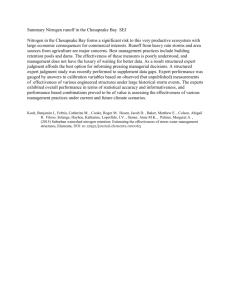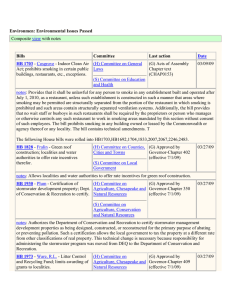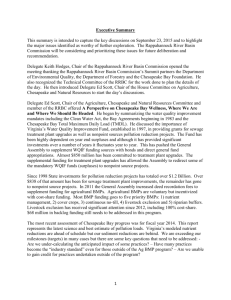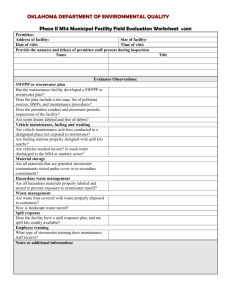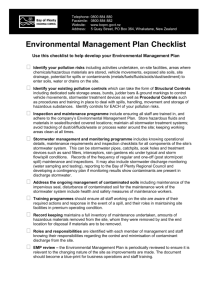Wrap Up and Adjournment, Delegate Keith Hodges, Chair
advertisement
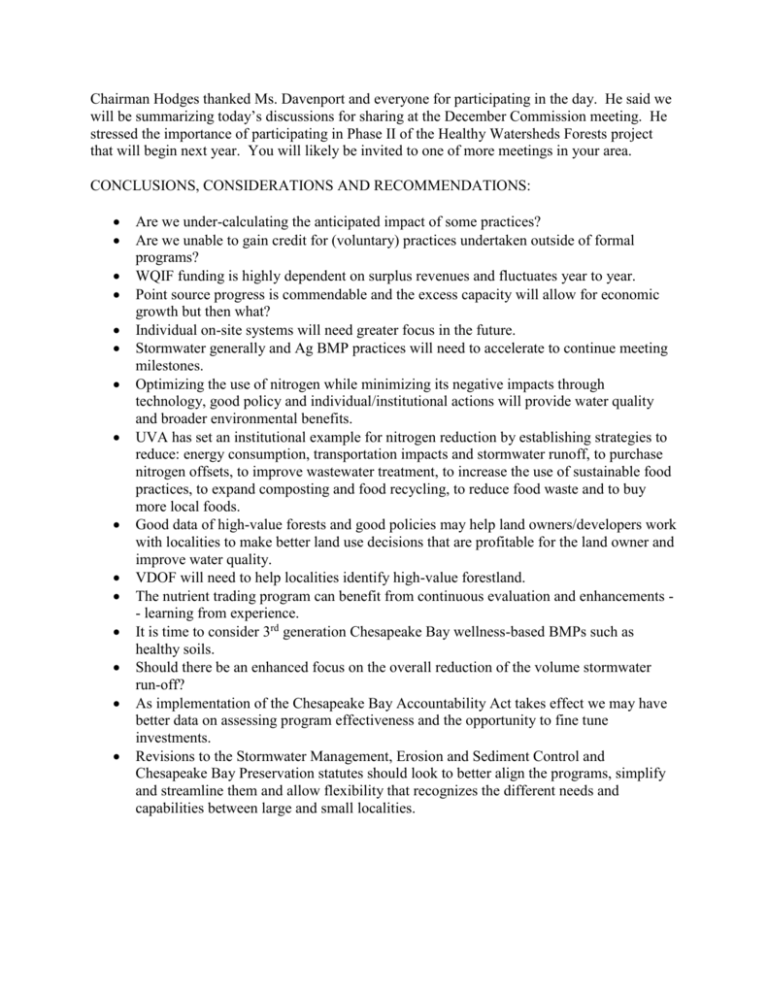
Chairman Hodges thanked Ms. Davenport and everyone for participating in the day. He said we will be summarizing today’s discussions for sharing at the December Commission meeting. He stressed the importance of participating in Phase II of the Healthy Watersheds Forests project that will begin next year. You will likely be invited to one of more meetings in your area. CONCLUSIONS, CONSIDERATIONS AND RECOMMENDATIONS: Are we under-calculating the anticipated impact of some practices? Are we unable to gain credit for (voluntary) practices undertaken outside of formal programs? WQIF funding is highly dependent on surplus revenues and fluctuates year to year. Point source progress is commendable and the excess capacity will allow for economic growth but then what? Individual on-site systems will need greater focus in the future. Stormwater generally and Ag BMP practices will need to accelerate to continue meeting milestones. Optimizing the use of nitrogen while minimizing its negative impacts through technology, good policy and individual/institutional actions will provide water quality and broader environmental benefits. UVA has set an institutional example for nitrogen reduction by establishing strategies to reduce: energy consumption, transportation impacts and stormwater runoff, to purchase nitrogen offsets, to improve wastewater treatment, to increase the use of sustainable food practices, to expand composting and food recycling, to reduce food waste and to buy more local foods. Good data of high-value forests and good policies may help land owners/developers work with localities to make better land use decisions that are profitable for the land owner and improve water quality. VDOF will need to help localities identify high-value forestland. The nutrient trading program can benefit from continuous evaluation and enhancements - learning from experience. It is time to consider 3rd generation Chesapeake Bay wellness-based BMPs such as healthy soils. Should there be an enhanced focus on the overall reduction of the volume stormwater run-off? As implementation of the Chesapeake Bay Accountability Act takes effect we may have better data on assessing program effectiveness and the opportunity to fine tune investments. Revisions to the Stormwater Management, Erosion and Sediment Control and Chesapeake Bay Preservation statutes should look to better align the programs, simplify and streamline them and allow flexibility that recognizes the different needs and capabilities between large and small localities.


